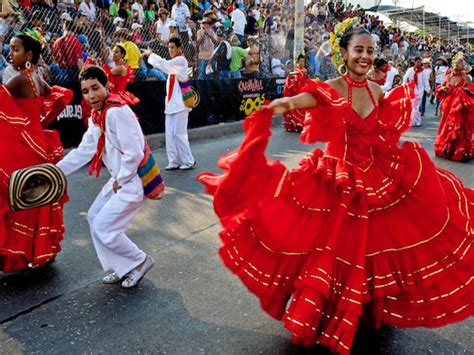
The first ambassador of Germany to Argentina was sent on 7 May 1871. German immigration in Argentina is the largest in Hispanic America. Over 3,000,000 Argentines are of German descent.
What percent of Argentines are German?
German diaspora in South America Roughly 1% of the population in Argentina speaks German, which is around 500,000 people. A total of over 3 million can claim German ancestry. The country became a refuge for about a thousand Nazi leaders after the end of the Second World War.
How common is German in Argentina?
Today, German Argentines make up the fourth-largest ethnic group in Argentina, with over two million citizens of Volga German descent alone.
Where do most Argentinians come from?
The most common ethnic groups are a mix between Spanish (including Galicians and Basques), Italian and Native American. It is estimated that up to 30 million Argentines, up to 62.5% of the total population, have Italian ancestry, wholly or in part. There are also some Germanic, Slavic, Irish and French populations.
Are Argentines German?
Over 3,000,000 Argentines are of German descent. They had great influence in the Argentine education system and many German schools were a place in the country.
What percent of Argentina is Italian?
Over 60% of Argentina's population has Italian heritage! With such a large Italian population in Argentina, it's no surprise that many Argentine surnames or last names sound Italian.
What percent of Argentina is European?
Unlike Mexico and South American countries such as Peru and Ecuador, Argentina has fewer native people and a large population, which came from Europe. The population is comprised as much as 95% of people of European descent, mostly from Italy, Spain, and Germany.
What percent of Argentina is Caucasian?
Abstract. Argentina is a predominantly European descent country, and prides itself on its Spanish and Italian roots. Unlike many other Latin American countries, 97% of Argentina's population is White.
Who lived in Argentina before the Spanish?
Along with numerous nomadic tribespeople, two main indigenous groups existed in Argentina before the European arrival. In the northwest, near Bolivia and the Andes, was a people known as the Diaguita, while further south and to the east were the Guarani.
Why do Argentines kiss?
Greetings Kissing on the cheek when greeting hello and goodbye is part of Argentine culture. When Argentines enter a room, every single person, stranger or family, receives one kiss on the right cheek. The same thing is done when leaving. You'll be expected to do the same when you travel to Argentina.
Do Argentines have blue eyes?
The situation in Southern Brazil and most of Argentina is pretty similar. How common are hazel and blue eyes in Mexico, Bolivia, Argentina, Chile, Cuba, Peru, Uruguay, Venezuela, Brazil, and Colombia? In some of those Countries, hazel, green, grey and blue eyes are few, but not uncommon ..
What percentage of Argentina is European?
Unlike Mexico and South American countries such as Peru and Ecuador, Argentina has fewer native people and a large population, which came from Europe. The population is comprised as much as 95% of people of European descent, mostly from Italy, Spain, and Germany.
What part of Argentina is German?
The five provinces with the largest numbers of inhabitants of German descent are, in order of largest German population: Córdoba, Entre Ríos, Buenos Aires, Misiones, and La Pampa. Town Square of Bariloche, Argentina.
How many Germans made it to Argentina?
Brazil took in between 1,500 and 2,000 Nazi war criminals, while between 500 and 1,000 settled in Chile. However, by far the largest number—as many as 5,000—relocated to Argentina.
Do any Argentines speak Italian?
The most spoken immigrant language, and the second most spoken language after Spanish, is Italian. About 1.5 million people in Argentina speak Italian as their first language. At least 25 million Argentines are said to have some Italian ancestry.
Why is Buenos Aires so European?
Most of the population of Argentina are descendants of immigrants from Spain, Italy and other European countries, with Buenos Aires as the most European city in South America.
Is Latin America mostly European?
However, Latin America is also very different from Europe. Its identity is a mix of its indigenous roots and the Hispanic, Portuguese, but also African, French or Italian influences.
Is Argentina more masculine or feminine?
Argentina scores 56 on this dimension, reflecting the presence of slightly more Masculine than Feminine elements.
Why did so many Europeans go to Argentina?
As the immigration came from several European countries, there was no single reason that led to the immigrants leaving their home countries. Some of them simply sought a better lifestyle, but many others escaped from ongoing conflicts within Europe.
Why are there so many Arabs in Argentina?
The first mentioned Arab settlers were the 15th century's Moorish (Morisco) Muslims of the Iberian peninsula that were people of Arab North African descent who explored the Americas with Spanish explorers, many of them settling in Argentina who were fleeing from persecution such as the Spanish Inquisition.
Who first inhabited Argentina?
The history of Argentina dates back thousands of years, with the first human settlements beginning on the southern tip of Patagonia 13,000 years ago. The indigenous people here and in the Pampas were advanced hunters and gatherers and included the Yamana and the Tehuelches.
What are natives of Argentina called?
Peoples: Atacama, Avá Guaraní, Diaguita-Calchaquí, Huarpe, Kolla, Mapuche, Rankulche, Toba, Tupí Guaraní, Comechingon. Most indigenous peoples live in rural communities, and represent between 3 and 5% of the country's total population.
Who colonized Argentina first?
Spain colonized Argentina in the 16th century; it declared its independence in 1816 and emerged as a democratic republic in the mid 19th century, but has since then periodically fallen under military rule.
What is the oldest city in Argentina?
Santiago del Estero, city, capital of Santiago del Estero provincia (province), northwestern Argentina, and the oldest continuous settlement in the country.
Where did the majority of immigrants to Argentina come from?
The majority of immigrants, since the 19th century, have come from Europe, mostly from Italy and Spain.
Are Argentinians touchy?
Physical Contact: It is common for Argentines to be quite tactile as they communicate. Touching another person's arm or back is a common and widely accepted practice.
 Hannah Divine has traveled to various regions of Argentina and has a firsthand understanding of its diverse geography, climate, and people. She writes about everything from the country's political and economic issues to its arts and music scene. Hannah Divine may recommend must-see destinations, local cuisine, and cultural events. Ultimately, she would be able to share their love and knowledge of the country in a way that inspires and informs readers.
Hannah Divine has traveled to various regions of Argentina and has a firsthand understanding of its diverse geography, climate, and people. She writes about everything from the country's political and economic issues to its arts and music scene. Hannah Divine may recommend must-see destinations, local cuisine, and cultural events. Ultimately, she would be able to share their love and knowledge of the country in a way that inspires and informs readers.









